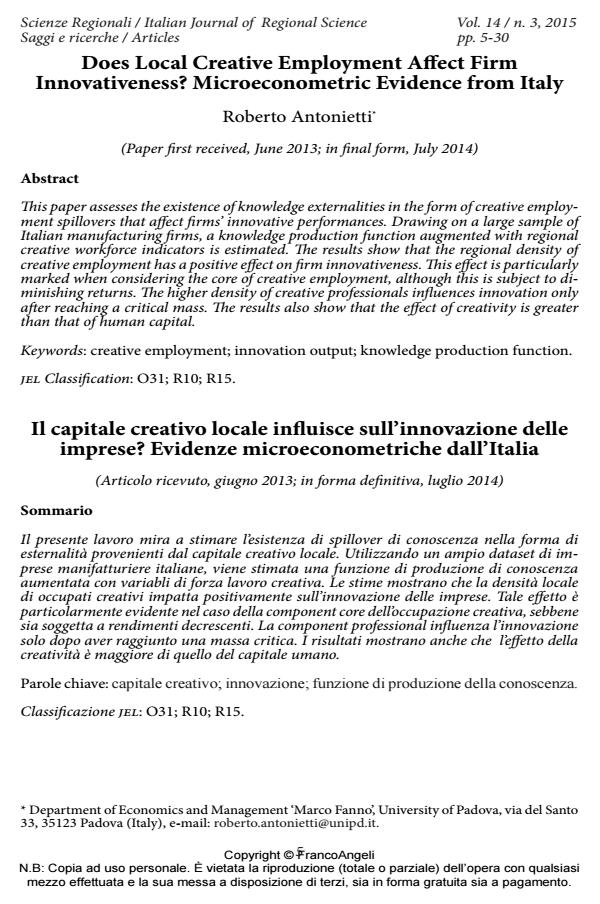Does Local Creative Employment Affect Firm Innovativeness? Microeconometric Evidence from Italy
Titolo Rivista SCIENZE REGIONALI
Autori/Curatori Roberto Antonietti
Anno di pubblicazione 2015 Fascicolo 2015/3
Lingua Inglese Numero pagine 25 P. 5-29 Dimensione file 358 KB
DOI 10.3280/SCRE2015-003001
Il DOI è il codice a barre della proprietà intellettuale: per saperne di più
clicca qui
Qui sotto puoi vedere in anteprima la prima pagina di questo articolo.
Se questo articolo ti interessa, lo puoi acquistare (e scaricare in formato pdf) seguendo le facili indicazioni per acquistare il download credit. Acquista Download Credits per scaricare questo Articolo in formato PDF

FrancoAngeli è membro della Publishers International Linking Association, Inc (PILA)associazione indipendente e non profit per facilitare (attraverso i servizi tecnologici implementati da CrossRef.org) l’accesso degli studiosi ai contenuti digitali nelle pubblicazioni professionali e scientifiche
- Do the creative industries support growth and innovation in the wider economy? Industry relatedness and employment growth in Italy Niccolò Innocenti, Luciana Lazzeretti, in Industry and Innovation /2019 pp.1152
DOI: 10.1080/13662716.2018.1561360 - Economic complexity and firm performance in the cultural and creative sector: Evidence from Italian provinces Chiara Burlina, Patrizia Casadei, Alessandro Crociata, in European Urban and Regional Studies /2023 pp.152
DOI: 10.1177/09697764221125336 - La formula dell'export per le province italiane: classe creativa + specializzazione manifatturiera Roberto Antonietti, Gildo Soggia, in ECONOMIA E SOCIETÀ REGIONALE 1/2015 pp.125
DOI: 10.3280/ES2015-001008 - The cultural and creative economy in Italy: Spatial patterns in peripheral areas Alessandro Crociata, Adriana C Pinate, Giulia Urso, in European Urban and Regional Studies /2025 pp.53
DOI: 10.1177/09697764231222221
Roberto Antonietti, Does Local Creative Employment Affect Firm Innovativeness? Microeconometric Evidence from Italy in "SCIENZE REGIONALI " 3/2015, pp 5-29, DOI: 10.3280/SCRE2015-003001